I'm sure we've all not infrequently come across this problem - scratches on furniture. Whether it was the dog, the cat, our carelessness or our haste, it really doesn't matter. As with white marks left by a glass of water or a cup of coffeewe always have a heart squeeze when we see them. And what's more, they're always in the most visible place, impossible not to notice them wherever you are in the room. With time, the obsession with the scratch passes and it seems like you don't see it all the time, but the desire to disappear completely remains. So I thought I'd give you some tips on how you can fix such scratches. We're not talking about capital damage here, but small accidents that can be fixed with what's "around the house".
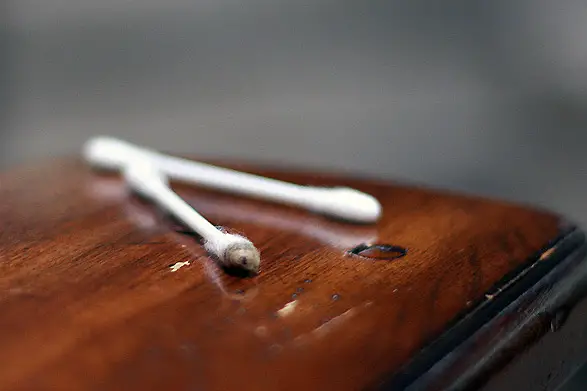
The most used trick is the one with walnut kernels. Basically, take a walnut kernels and rub it over the small scratches. Repeat the operation a few times and wipe the spot with a soft cotton cloth. Note that this method is only suitable for lighter-colored furniture. In the case of dark-colored furniture, the scratch must first be colored (as you will discover below). Walnut kernel contains enough oils to provide the necessary protection.
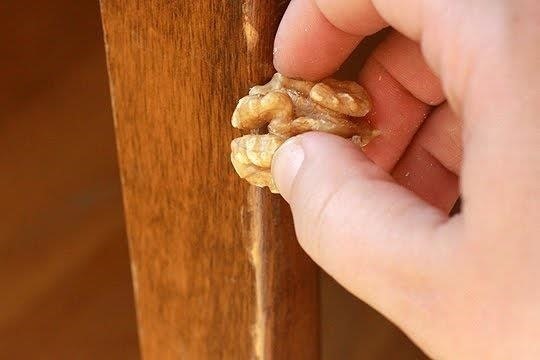
Another way to repair scratches on light-colored furniture is with a mixture of olive oil and vinegar 3:1. Place the parts in a container, mix well and apply with a soft cloth. Leave for a while so that the wood absorbs the mixture, then wipe with a clean cloth. Instead of vinegar, lemon juice may be used. The mixture of oil and vinegar can also be used to make a furniture polish. Mix equal parts of oil and vinegar and put 1 part of the mixture in 4 parts of water. Add 30 drops of essential oils of the air-flavoring type. This mixture can be used to polish floors and furniture.
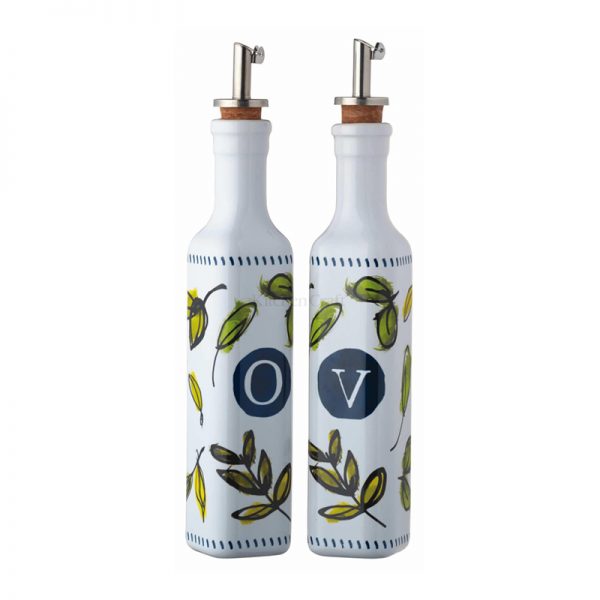
If the furniture is dark in color then it's hard to repair with something that basically only replaces the varnish coat. In this case the scratch must be stained. If it is a dark color use coffee sugar. Apply it to the scratch and leave a little while for the wood to absorb. After that wipe with a clean cloth and after drying, apply a floor wax or rub the spot with a walnut crumb.
Can also be used as a colorant black tea. Put a sachet of black tea in a few tablespoons of boiling water and leave for a few minutes. After the solution has cooled, apply to the scratch with a cotton bud with cotton wool at the end. Leave for 5 minutes, then wipe with a dry cloth. Always use soft cotton cloths for such operations. After drying, apply wax with a pad or rub with walnut kernels.
If the scratch is very fine you can use a eyeliner brown in color. The soft crayon will color the scratch very well and even protect it as it is very oily. If you think it's necessary you can put a wax on top, but if the scratch is very fine there's no need.
Very good results can be achieved with shoe polish. Brown colors are very suitable. Apply with a pad right on the scratch. Let it soak into the wood, then wipe with a cloth.
For coloring you can also use markere or colouring pencils of children. Choose them carefully to match the color, otherwise you'll get the opposite result - a much more visible scratch.
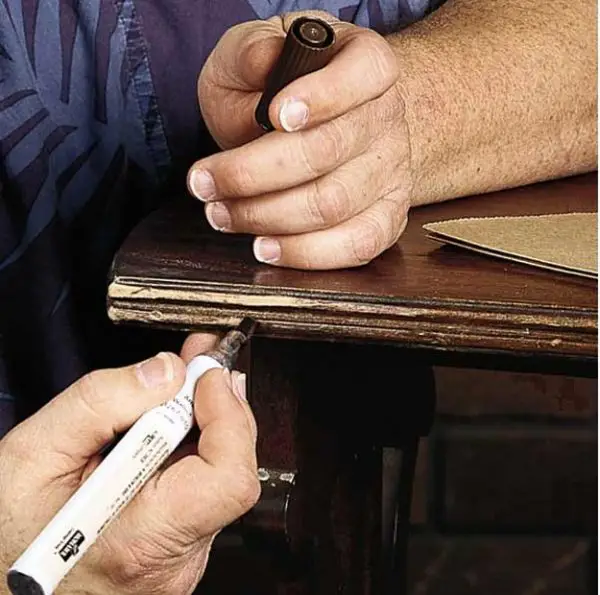
They're not the only tricks you can use to remove scratches on furniture, but they are the most handy. DIY stores and specialty stores that sell wood varnishes and paints are almost always stocked with touch-up pencils of different colors. It's good to have some in the house, in a color close to the color of the furniture, and a small can of floor wax. You never know when you'll need them, as they're also useful tips for refreshing the finish of furniture or wooden floors.
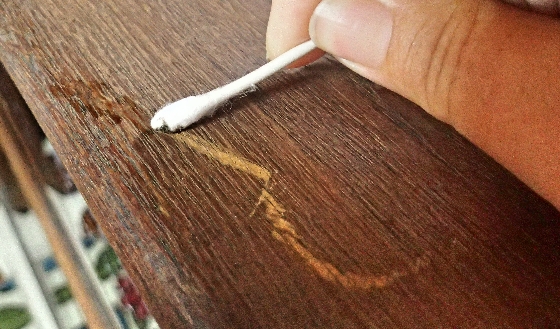


























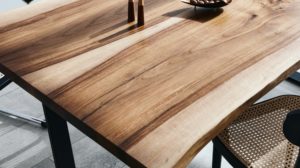






Hello,
I appreciate your articles and the way you answer your readers' questions and hope you can teach me how to proceed to solve my problem.
I purchased a solid walnut top table, oiled. Unfortunately, during transport, the table was scratched; there are a few fine scratches and a scratch about 5 mm wide and 1 mm deep. I followed the walnut advice and it worked perfectly on the superficial scratches. The problem is with the deep and wide one. We wouldn't want to return it if we could fix it, it was love at first sight. I would particularly appreciate it if you could teach me how to proceed. Thank you in advance for your reply!
Hello!
Thanks for your appreciation!
Being oiled walnut means that the wood is scratched and more difficult to repair. Try steam ironing the place. Put a rag on top and iron as usual. The heat should swell the wood and reduce the depth of the scratches. Try before on a less visible corner, so as not to damage the oil. Normally nothing should happen, but now there are all sorts of synthetic products with the generic name of oil.
There are commercially available retuse putties or retuse crayons. They can be found in DIY or specialist shops. Use one in walnut colour.
You can also carefully seal the scratch with wood stain or a mixture of aracite and walnut powder (from sanding or drilling). After grouting, the place should be lightly sanded and re-ground.
Good luck!
I appreciate your answer. I will try the iron advice first, as it is the most handy. With patience and perseverance I hope the situation will improve.
Thank you and I wish you much success in the future. You do an excellent job, you can feel the passion in every line.
Have a nice day!
Good evening,
I also have a problem and maybe you can help me with a solution. I have white glossy mdf furniture and it has been scratched by the cat. How can I fix it? It looks ugly! Thanks for your help!
Hello!
I'm starting from the premise that it's painted, not peeled. If it's peeling it can only be fixed by changing the film.
It is best solved by sanding the surface until the scratches are completely removed and a new coat of paint is applied. It is also difficult because the paint is glossy, the repair must be done by someone skilled because at the end, after drying, the paint will have to be polished.
The quick option would be to look for white touch-up waxes in DIY stores. They come in stick form. You'll need to find the white that matches your furniture. Apply the wax to the scratches, let it harden and remove the excess with a fine-bladed utensil. The wax should not stick out, be out of the plane of the furniture. Finally, polish the spot thoroughly with a soft cotton cloth or piece of felt.
Good luck!
Hello!
Do these tricks work for pallet furniture? I want to buy a TV dresser, but there is only the piece that has been on display and it has a few scratches and chipped wood in one place, so I don't know if I should make the purchase.
Thank you!
Hello!
No, it doesn't work the same way. Chipboard furniture has resin-impregnated paper or plastic film on top. If it is scratched, it cannot be repaired in the same way as varnish.
For such furniture you can use touch-up putty - no resistance, but it solves the aesthetic problem - or you can paint it completely. I would only buy such a scratched piece of furniture if I was going to repaint it.
All the best!